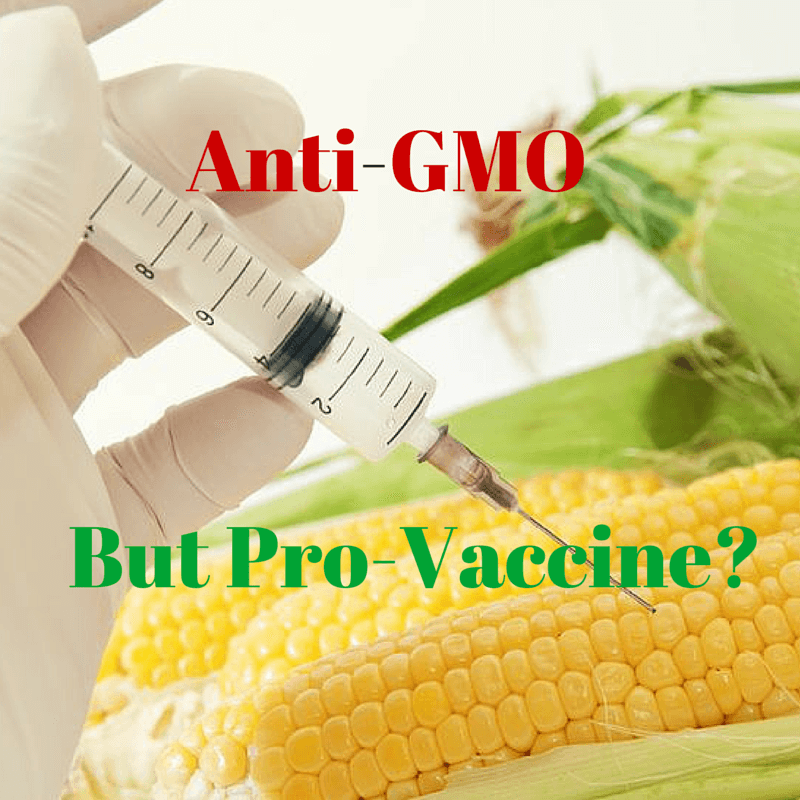How can we — those committed to science and rely on empirical data — convert those who are religiously opposed to genetically modified crops despite an overwhelming consensus among independent sciences and global science?
There may be lessons to be learned in how the anti-vax debate has unfolded. I’ve recently written about a study in which researchers reported the best way to change the mind of anti-vax parents was to focus on the risks of their child not being vaccinated. The study results showed that the most effective way to change someone’s mind was to teach them about the consequences of their child getting a vaccine preventable disease like measles instead of trying to refute every claim by the anti-vax movement (i.e. mercury in flu vaccines causes autism).
There are many differences between the anti-GMO movement and the anti-vax movement, but there are also striking similarities. Both are grounded in the “natural is good” mentality: GMOs are bad because the crops aren’t as nature intended them to be; vaccines are bad because we are injecing ourselves with unnatural synthetic chemicals. Both movements argue that people should be able to know what is going into their own bodies and decide on their own whether they want to accept “foreign” or “synthetic” chemicals. Both are strongly anti-corporate: GMOs are linked to Big Ag and vaccines are peddled by Big Pharma. Not surprisingly, there is a lot of overlap in the most high profile “leaders” of these movements, including hucksers like ‘natural doctor’ Joseph Mercola and Mike Adams, head of NaturalNews.com.
The similarities in the two movements suggests that what works in converting skeptics to science in the vaccine debate might work in the GMO controversy. Science is making headway in chipping away at anti-vax beliefs but there has been no surge toward science on the GMO front. According to a recent PEW survey, 25 percent of people in the last year have change their opinion to a favorable view of vaccines; but more than 57 percent of the population remains skeptical about the safety of GMO foods.
For vaccines, it is fairly easy to demonstrate the risks of not getting vaccinated because they are tangible: people often die from diseases that vaccines can prevent. In the mid 20th century, people knew the risks of not getting vaccinated because they had (probably several) loved ones who were paralyzed by polio or killed by the flu. These two diseases in particular were so widespread that vaccines were considered life-saving no-brainers to most people. But because vaccines work so well, these life-killing versions of these diseases almost vanished. Today few people have this type of connection and therefore haven’t seen these risks in action. In other words, the success of vaccines has lulled some people into believing they are not necessary.
To counteract this, the American Academy of Pediatricians is currently running a campaign called “Medicine before Vaccines” to teach young parents about the risks of their child getting measles to help them learn the risks. The recent surge in high profile deaths in families that opted not to have their children vaccinated has also helped underscore the scientific consensus.
What about GMOs?
Pro science advocates need to focus attention on the collective environmental and health risks we face if we don’t fully take advantage of biotechnology. One obvious risk is that millions of lives could be lost if protestors succeed in blocking the introduction of vitamin enhanced staple crops like rice and cassava. Such a campaign would not be a silver bullet though. Advocates have been preaching the virtues of GM crops with nutrition advantages for years and they are still not being grown, because of technical reasons in some cases but mostly because of strong opposition from ideologues. Tragically, much like the visible risks of the Disneyland measles outbreak earlier this year, the weight of these risks might need to be noticeable for affluent Americans and Europeans, whose influence is far reaching, to experience a change of heart and mind.
Science advocates might best focus on what might be called the Whole Foods shopper; how will they respond? One strategy might be to focus on the broader benefits of biotechnology, and link GMO crops to GM drugs. If the GMO hysteria movement grows, GM drugs might be next in the crosshairs. Perhaps it might be helpful to draw parallels to the risks of curtailing GMO insulin to the risks of not having available water efficient traits to address droughts in California or Africa. Maybe Neil Young, who uses GM drugs to address his life long fight with Type 1 diabetes but demonizes GM technology, should take note and this destructive irony.
GMOs also have the ability to be a major player in emission reductions from the engineering of methane-less rice to crops that sequester higher amounts of nitrogen. If scientists and advocates link the risks of unchecked anthropogenic climate change to the benefits of GM crops, more people might change their mind. These people may weigh the consequences and see that intransigent opposition to GMOs risks creating an uninhabitable planet.
If the anti-GMO crowd thinks hard about these health and sustainability benefits, crops, they might be more willing to see other benefits in these crops. That might be pie in the sky thinking, but science advocates need better communication strategies. Monsanto doesn’t have the bandwidth to host every skeptic, like Bill Nye.
Nicholas Staropoli is a research associate for the American Council on Science and Health. He has an M.A. in biology from DePaul University and a B.S. in biomedical sciences from Marist College. Follow him on twitter @NickfrmBoston































